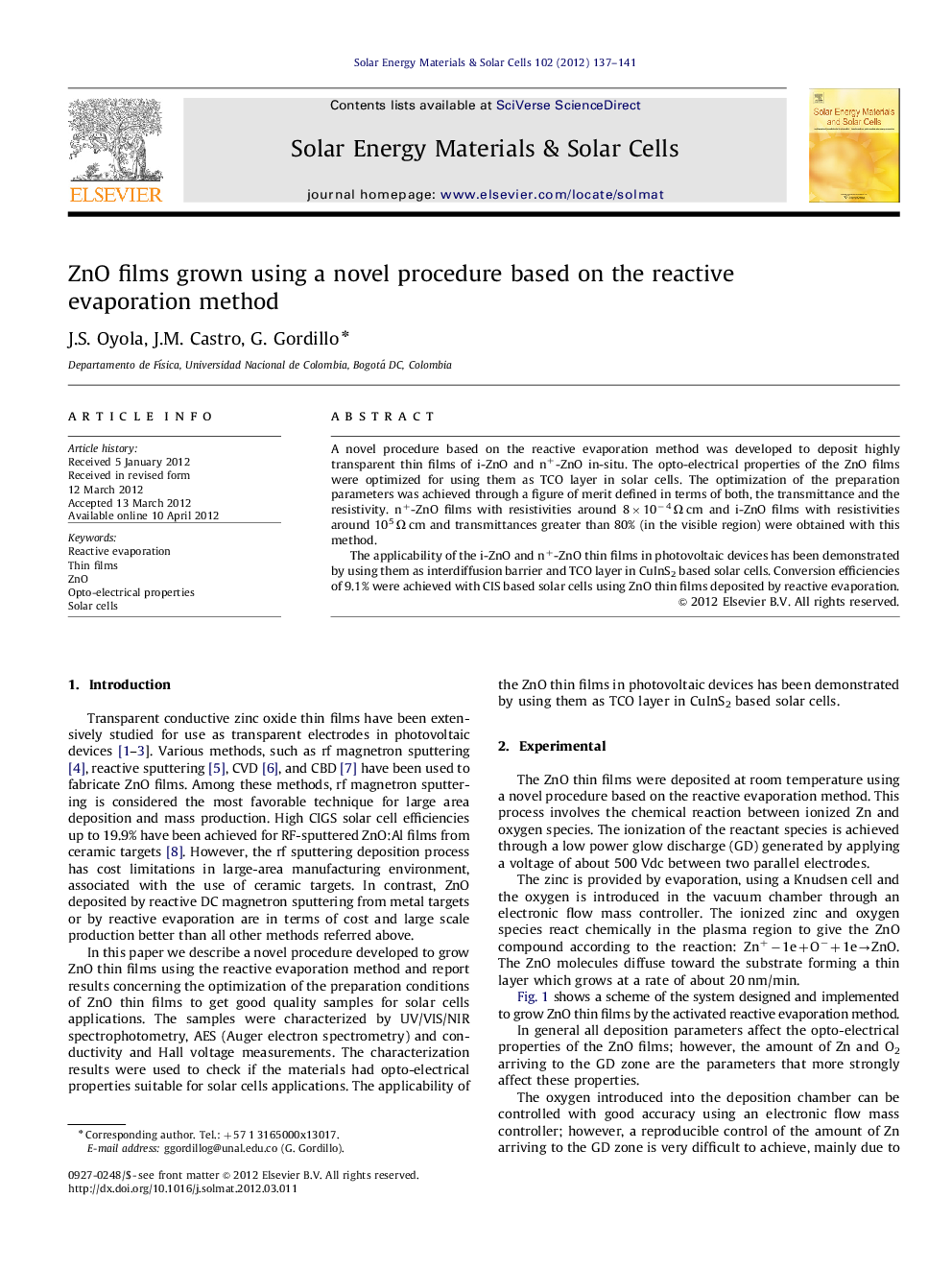| Article ID | Journal | Published Year | Pages | File Type |
|---|---|---|---|---|
| 78563 | Solar Energy Materials and Solar Cells | 2012 | 5 Pages |
A novel procedure based on the reactive evaporation method was developed to deposit highly transparent thin films of i-ZnO and n+-ZnO in-situ. The opto-electrical properties of the ZnO films were optimized for using them as TCO layer in solar cells. The optimization of the preparation parameters was achieved through a figure of merit defined in terms of both, the transmittance and the resistivity. n+-ZnO films with resistivities around 8×10−4 Ω cm and i-ZnO films with resistivities around 105 Ω cm and transmittances greater than 80% (in the visible region) were obtained with this method.The applicability of the i-ZnO and n+-ZnO thin films in photovoltaic devices has been demonstrated by using them as interdiffusion barrier and TCO layer in CuInS2 based solar cells. Conversion efficiencies of 9.1% were achieved with CIS based solar cells using ZnO thin films deposited by reactive evaporation.
► A novel procedure was developed to deposit thin films of i-ZnO and n+-ZnO without extrinsic doping. ► Highly transparent and conductive ZnO films were grown by the reactive evaporation method. ► The high conductivity of ZnO films is associated to free carriers generated by oxygen vacancies. ► The applicability of the ZnO films was demonstrated in CuInS2 based solar cells.
